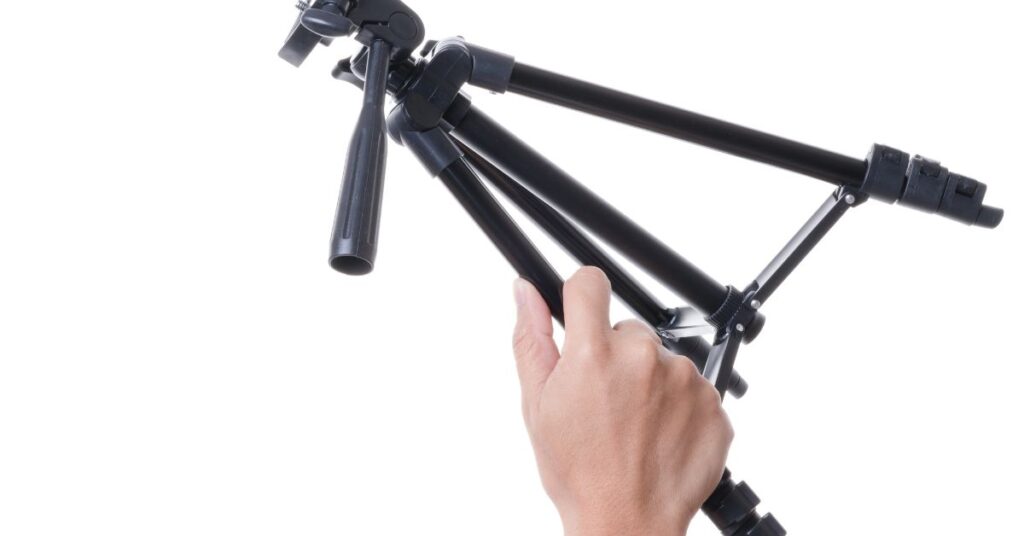In this exciting and creative field, Ice Fishing Photography is more than a noun; it describes a whole subculture. With ice fishing photography, you may take pictures that capture the beauty of frozen landscapes and the thrill of fishing. Take a trip through time-frozen scenes with ice fishing photography. Ice fishing photography is a special treat for everyone who enjoys fishing and photography. Come explore the depths of ice fishing photography with us as we learn how well it combines the craft of visual storytelling with the thrill of ice fishing.
Choosing the Right Gear
Camera Selection

The discerning choice always seems to lean toward the use of either a Digital Single-Lens Reflex (DSLR) or a state-of-the-art mirrorless camera when trying to capture the mesmerising intricacies found within ice formations and the expansive allure of landscapes that leave one breathless. You may take complete creative control of your photographs with the help of these fantastic photography tools, which allow you to precisely adjust such fundamentals as aperture, shutter speed, and ISO.
Lenses for Frosty Scenes

The use of wide-angle lenses proves to be an essential travel companion while photographing ice fishing. These technological wonders allow for the capture of enormous, still landscapes while also providing new ways for artists to express themselves freely via unconventional compositions and combinations.
Tripods and Stabilization

The importance of a steady surface while taking photographs cannot be emphasised; it acts as a barrier to prevent blurring in your images. It’s common sense to spend money on a sturdy tripod that can withstand the cold if you plan on doing any serious photography in the snow. Recognizing that extended shooting sessions might leave your hands numb emphasises the need for an external stabilising agent, which is why this decision was made.
Mastering the Lighting
Natural Light Wonders
Natural light, especially the soft and diffused lighting that comes with gloomy days, has the ability to choreograph stunning transitions in the field of ice fishing photography. A true enchantress, this brilliant phenomenon deftly prevents the invasion of harsh and unwanted shadows while conducting a symphony that draws out the subtle variations in the ice sculptures and their surroundings. Photographers are given a perfect stage for the presentation of stunning visual storytelling when they capture this cosmic dance of light and atmosphere.
Working with Snow Reflections
When it comes to photography, snow’s reflecting properties may be a powerful weapon if you know how to use them. Strategic use of this natural phenomenon may provide arresting outcomes, bolstering the aesthetic argument of your works of art. You may give your subjects a chance to luxuriate in the gentle splendour of light refracted by the white canvas by carefully managing where they are placed. Together, the topic and the reflected light create striking imagery that goes beyond the mundane to weave a tapestry of emotive narrative.
Golden Hour and Blue Hour Shots
The golden hour and the blue hour play essential roles in nature’s light show, with their respective epochs imparting distinctive colour palettes on the sky. The landscape is draped in a tapestry of warm tones as the sun elegantly approaches the horizon, creating a spell that elevates even the most mundane of sights to the realm of the magical. This luminous brilliance of the golden hour has the unique capacity to impart an ethereal, emotive aspect to your images.
But when the sun sets and the day gives way to night, the blue hour comes, bringing a calm coolness to the environment. Your thoughts get woven into the blue fabric of this world, giving your vision a reflective depth. If you’re open to experiencing both, you’ll be rewarded with a wealth of visually stunning moments, where the interplay of light and time creates a tale that is nothing short of amazing and leaves behind vivid, lifelong memories.
Composition and Framing
Rule of Thirds on Ice
The acclaimed Rule of Thirds serves as a guiding light inside the area of ice landscapes as a compositional method. This creative tenet suggests seeing your composition inside a 3×3 grid, with two horizontal and two vertical lines delineating the squares. Strategic placement of these focus components along these delineations may give birth to a harmonic balance that captures the observer’s attention and takes the synergy between the topic and surroundings to new heights. This delicate balancing act of composition will not only capture the core of your scene but also elevate it to a story with more emotional and creative resonance.
Including Anglers in Shots
A powerful chance to expand your visual narrative exists within the canvas of frozen landscapes and placid waterways in the presence of the fishermen themselves. You go on a mission to capture the sense of commitment, the spark of excitement, and the camaraderie that accompanies the pursuit of ice fishing by including these fans of the frozen domain in your compositions. These human components weave together with the scene’s natural splendour to create a story that not only hits close to home but also captures the scene’s heartbeats.
Capturing the Solitude
Isolating individual fishers inside this enormous tapestry of ice and snow is a strong photography method that arises amid the vastness of frozen landscapes. The peacefulness and quietness of ice fishing are well captured by this composition, which pits a single individual against an otherwise lovely background. An exciting tale unfolds as the contrast between the human presence and the tranquil environment sparks the imagination. Your photography becomes a profound visual symphony via the masterful use of space and isolation, inspiring reflection and gratitude for the peaceful beauty that comes from being alone.
Dealing with the Cold
Protecting Your Equipment
The threat of a dead battery looms big as you explore chilly settings with your camera. Extreme cold has the magical power to deplete your camera’s batteries quickly. An ingenious workaround arises to this problem, however: keeping backup batteries warm.
Keep spare batteries protected from moisture and heat in a snug pocket near your body. Keeping these sources of crucial energy warm will keep them working correctly and won’t hinder your imaginative processes. This well-planned strategy not only allows your equipment to last longer but also gives you the freedom to keep photographing the stunning landscapes of the frozen world despite the freezing air.
Dressing for Success
It’s crucial to dress appropriately for the weather and the long hours spent filming. Wrap yourself warm and use fingerless gloves to operate your camera more precisely.
Editing for Excellence
Enhancing the Wintry Vibes
Enhance the winter feel by adjusting the white balance and clarity slightly to highlight the icy and snowy tones.
Correcting Exposure to Snow
The metering on your camera may get off in the snow. Make the necessary adjustments to the exposure compensation to keep the snow from becoming grey.
Adding a Hint of Warmth
Warm up your photographs to contrast with the chilly setting. During the golden hour, turn up the warm tones.
Sharing Your Masterpieces
Social Media Showcasing
Use social media sites like Instagram and Facebook to show off your ice fishing photos. Get your images seen by more people and make connections with other photography buffs by using trending hashtags.
Entering Photography Contests
Enter winter- or nature-themed photography competitions. Entering one of these competitions is a great way to get your name out there.
Preserving the Environment
Ethics of Ice Fishing Photography
Keep your distance from wild animals and respect nature. When visiting an animal’s habitat, it is important to avoid upsetting the creatures and to behave ethically.
Respecting Wildlife and Habitat
Keep your distance from any wildlife, nesting locations, or sensitive ecosystems. The natural environment shouldn’t suffer for your photography.
Ice Fishing Photography [FAQs]
Can I use my smartphone for ice fishing photography?
Absolutely! Even while dedicated cameras provide more options, the cameras in today’s smartphones are more than capable of taking fantastic ice fishing shots.
What’s the best time of day for capturing ice fishing moments?
The peaceful ambience of ice fishing is enhanced by the golden hour, which occurs just after dawn and just before sunset and has warm, mellow sunlight.
How do I prevent condensation on my camera in cold temperatures?
Give your camera some time to adjust to the cold. Put it in a plastic bag to stop moisture before taking it into the house.
Are there any photography contests specifically for winter sports?
The winter sports and outdoor activities niche is well represented in photographic competitions. Participating in such competitions is a fantastic way to exhibit your pictures of ice fishing.
What’s the importance of obtaining permits for nature photography?
By securing the appropriate licenses, you can be sure that you’ll be adhering to the rules and regulations in place to safeguard the environment. This demonstrates consideration for the local community and other tourists.
Conclusion
In conclusion, Ice fishing photography introduces an intriguing new way to capture breathtaking scenes among icy landscapes. In ice fishing photography, the beauty of frozen landscapes is brought to life, and the excitement of fishing is captured forever. Whether you’re a seasoned angler, a budding photographer, or someone who loves the look of a winter landscape, ice fishing photography has something for you. Explore the fascinating realm of ice fishing photography and find the pristine frozen landscapes just asking to be photographed.











